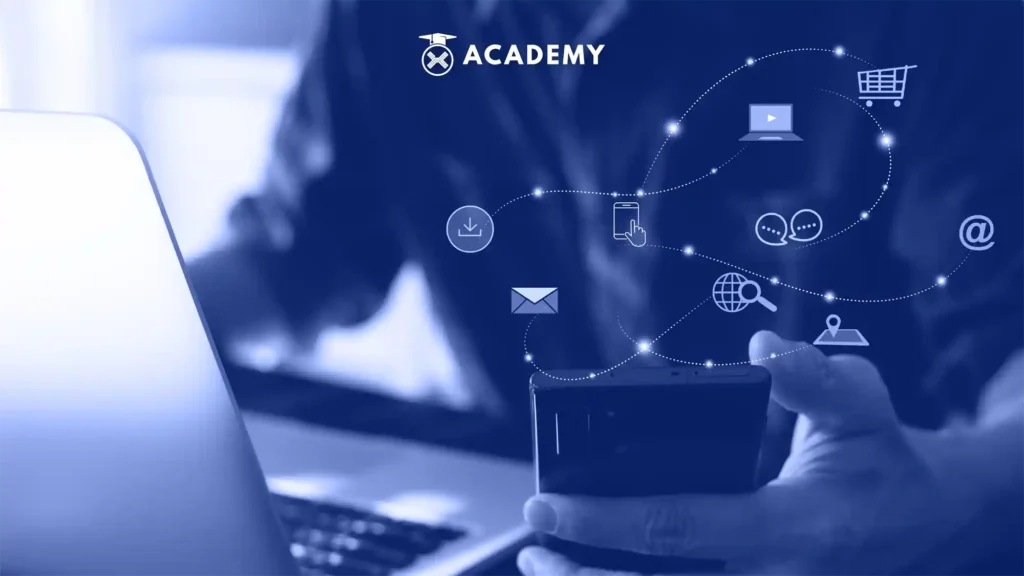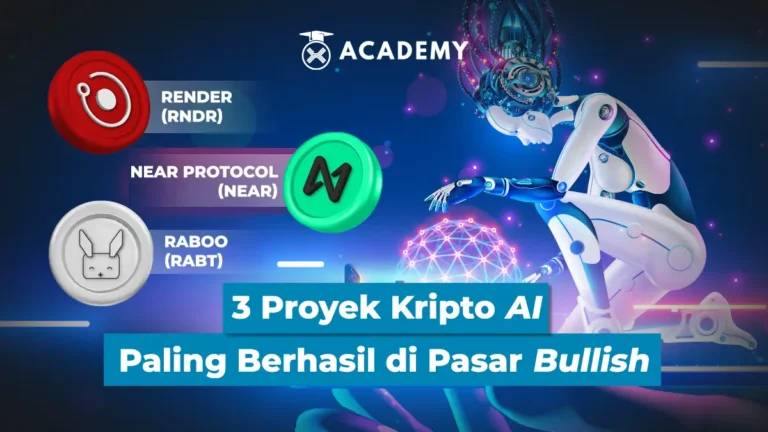Along with the rapid development of technology today, one concept that is attracting a lot of attention is the Internet of Things (IoT). Basically, the Internet of Things (IoT) is a concept where various physical devices, such as sensors, household appliances, vehicles, and more, are connected to the internet and communicate with each other.
On the other hand, blockchain is the underlying technology that enables the secure and decentralized recording of transactions. It is a series of interconnected blocks of data stored on a large number of computers across a network.
In today’s digital world, IoT and blockchain are important because their combination provides many benefits. One of them is related to data security.
In this case, IoT generates a lot of sensitive data, such as personal information and the physical state of devices. By using blockchain, this data can be stored securely and cannot be manipulated.
So, to better understand what the Internet of Things (IoT) is, the elements that form its ecosystem, how it works, its benefits in various fields, and how IoT relates to blockchain, see the following review.
What is the Internet of Things?

The internet of things definition is a concept that connects devices via the internet as a communication medium.
In the IoT era, users can connect and interact with each other to carry out various activities and access, manage, and send information automatically.
When we talk about IoT, this concept is similar to machine-to-machine (M2M) in several aspects. However, the two have differences in scale and scope of use.
M2M refers to technology that allows communication between machines without the need for human intervention. In other words, M2M focuses more on machine interaction to carry out certain programs.
For example, this can be seen in factory operations, where machines operate automatically and communicate with each other. Thus, they can manage the production process without the need for human intervention.
It is clear that there are real differences between the two. It is also important to remember that, in practice, IoT and M2M are often used together.
This is because both have the same goal, namely, building automatic communication to increase efficiency.
Get to know the three elements that form an IoT ecosystem
In fact, knowing the elements of forming an IoT (Internet of Things) ecosystem is very important in understanding and optimizing the potential of IoT technology.
With a good understanding of all these elements, anyone can harness the full potential of IoT technology and make it a valuable asset to their business or organization.
The following are the three) elements of forming an IoT ecosystem that you need to know, namely:
1. AI
Artificial intelligence, or what is often referred to as artificial intelligence (AI), refers to an intelligence system implemented in a machine with the aim of making the machine capable of thinking and behaving like humans.
AI has various branches, one of which is machine learning. You can start understanding machine learning concepts by taking Dicoding’s Machine Learning Developer course, the first step in developing artificial intelligence.
In the context of IoT, almost all devices and machines can become smart devices. This means IoT has a significant impact on various aspects of our lives. AI’s role in IoT includes data collection, algorithm design and development, and network management.
2. Sensors
The next element is the sensor. Sensors are components that differentiate IoT devices from other advanced devices. With the presence of sensors, IoT devices can identify instruments, allowing them to transform from passive devices to active, integrated devices.
3. Connectivity
The last one is connectivity. Connectivity is also often referred to as a connection between networks. In the world of IoT, there is potential to create dedicated networks used for IoT devices.
How the Internet of Things Works
In principle, the Internet of Things (IoT) operates by connecting various types of devices, both software and hardware, to the internet network. There are three main components that play a key role in the IoT ecosystem, namely sensors, gateways, and clouds.
The sensors used in this concept can be of various types, such as movement sensors, light sensors, and various other types of sensors. The purpose of using these sensors is to collect data from physical objects connected to the internet network.
After the sensors have successfully collected data, the gateway’s role is to transmit the data to the connected cloud or internet.
The gateway is also capable of data processing and taking automatic action on the data received, such as controlling connected devices. Here, artificial intelligence (AI) can help IoT optimize device functions.
Finally, the data that has been transmitted by the gateway is sent to the cloud server. Clouds that are connected to the internet provide the services and applications needed to manage IoT systems.
Thus, users can give direct commands to the device to perform certain actions by accessing data stored in the cloud.
Benefits of the Internet of Things in Various Fields

Knowing the benefits of the Internet of Things (IoT) in various fields will have a positive and significant impact, both for individuals, companies, and society as a whole. Basically, this will help many parties identify the potential changes and innovations that this technology can bring. The following are the benefits of IoT in various fields that you need to know, including:
1. Health
In the health sector, the Internet of Things (IoT) continues to develop rapidly. The future suggests that health examination results can be immediately accessed by medical personnel or hospitals.
The data sent includes information such as blood pressure, medical history, current diagnosis, and various other health information.
The application of IoT technology in health has become a reality today, for example, with a nursing robot operating in a clinic in Moscow. This robot has helped health workers during the ongoing pandemic.
2. Livestock
IoT has provided great benefits in the livestock industry. Some of the key benefits of IoT in animal husbandry include animal health monitoring, inventory management, environmental control, feed and drinking water management, tracking livestock location and behavior, reproduction management, production optimization, energy management, and remote monitoring of livestock conditions.
3. Smart Home
A smart home allows users to control devices such as lights, refrigerators, air conditioners, and others via the internet.
This also includes the ability to turn lights on and off, open doors, and perform other actions in a more practical, efficient, and time-saving manner.
4. Transportation
IoT also plays an important role in the transportation sector. IoT helps in integration, control, and data processing in transportation systems. For example, autonomous cars that can park themselves and autopilot systems in cars It is hoped that with the adoption of IoT in transportation, the number of accidents can be reduced significantly.
5. Environment
IoT applications and devices with sensors are used in environmental monitoring. This includes tools that monitor air quality, devices attached to wildlife in captive breeding programs, monitoring water conditions, as well as the use of IoT for early warning systems for natural disasters.
6. Smart Cities
A smart city is a solution to overcome urban challenges such as congestion, waste management, electricity problems, and others. For example, janitors can detect waste buildup through existing IoT systems, enabling more efficient and timely handling.
How Does IoT Relate to Blockchain?
It is important to understand that IoT and blockchain can be interconnected in the context of data security and privacy. These two technologies are basically able to work together in various ways, one of which is related to decentralized data security.
As is known, a blockchain is a decentralized ledger that combines data into interconnected blocks. Every transaction or data change recorded in the blockchain is stored across a large number of nodes in the network.
This means that IoT data recorded in the blockchain is safer because no single entity can control or change the data carelessly. It provides a high level of security against hacking and data manipulation.
Collaboration between the two can also occur in terms of better data privacy. In this case, blockchain can also help protect user data privacy.
Sensitive data generated by IoT devices can be encrypted and only accessed by the private keyholder. As a result, individuals have greater control over their personal data, and access to this data can be recorded on the blockchain to increase transparency.
Furthermore, IoT and blockchain can collaborate regarding resistance to DDoS attacks. Meanwhile, distribution denial of service (DDoS) attacks are a major threat to IoT infrastructure.
In networks that use blockchain, such attacks are more difficult to carry out because there is no single point of vulnerability that can be the main target.
Conclusion
In conclusion, cooperation between the Internet of Things (IoT) and blockchain has great potential to change various sectors in the current digital era. The reason is that collaboration between IoT and blockchain has great potential to change the way we interact with technology, data, and the surrounding environment.
In addition, the combination of these two technologies brings a number of important benefits, including decentralized data security, data integrity monitoring, enhanced privacy, automation through smart contracts, and decentralized access management.
So, now you understand what the Internet of Things (IoT) is, the elements that form its ecosystem, how it works, its benefits in various fields, and how IoT is related to blockchain.
Furthermore, you can also read other interesting articles, such as Chat GPT and Artificial Intelligence, only at INDODAX Academy.
For your information, INDODAX Academy is the right platform for you to learn about the world of digital assets and blockchain technology properly.
Later, if you already understand the ins and outs of the world of digital assets and blockchain technology, you can start investing in crypto assets in INDODAX.
Before investing in crypto in INDODAX, it’s a good idea for you to first download this best and most trusted crypto platform and application.
You don’t need to hesitate or worry about security because INDODAX is a licensed platform and is subject to government regulations.
Well, what are you waiting for? Come on, start investing in crypto at INDODAX!








